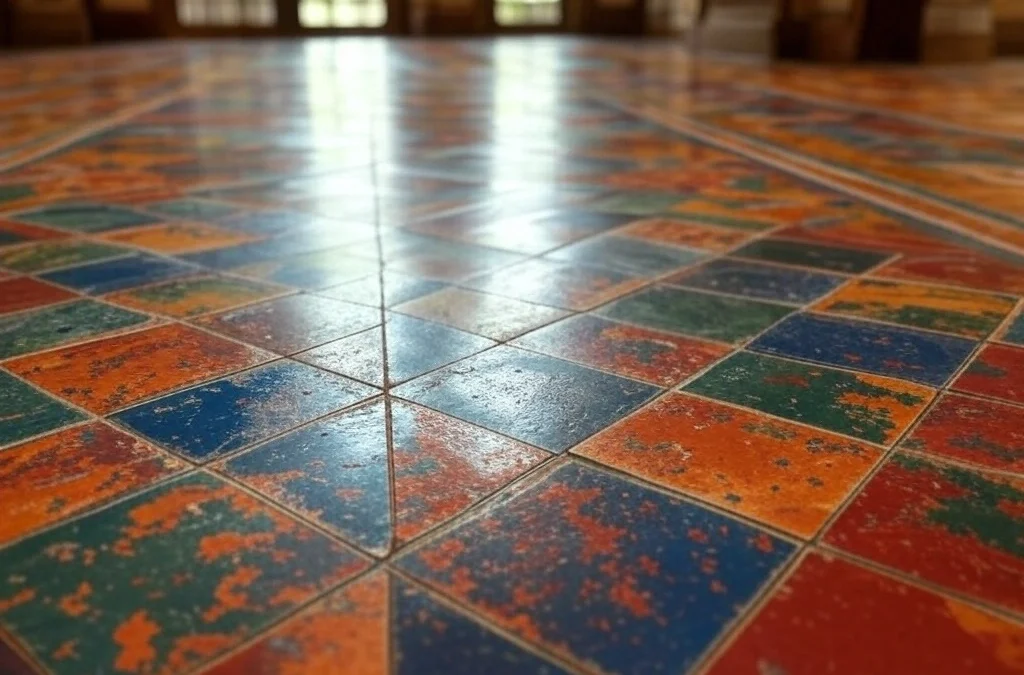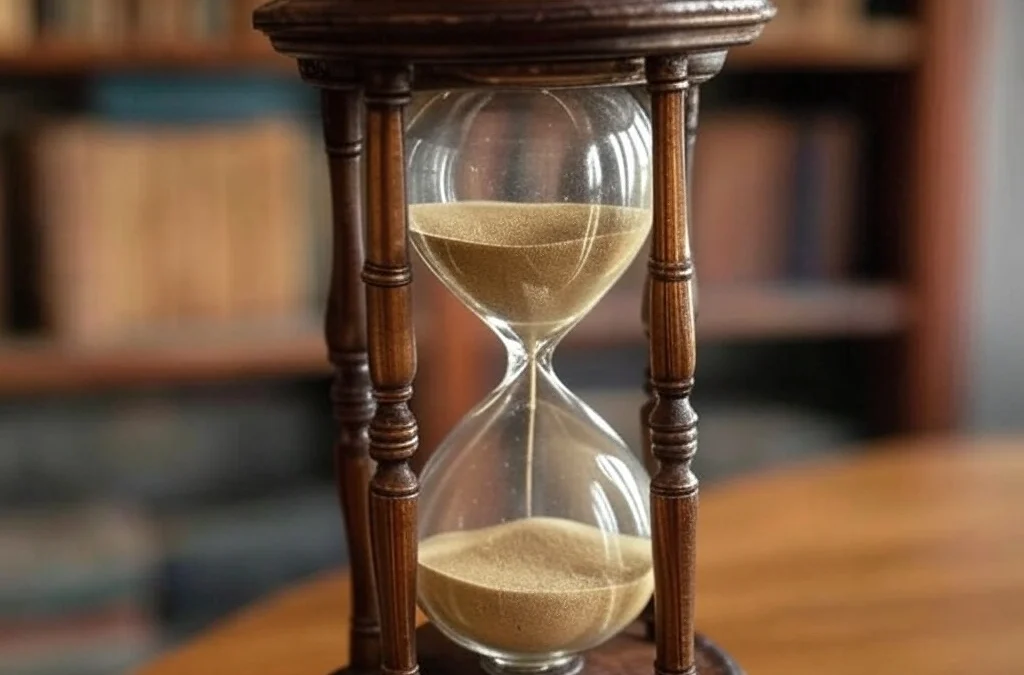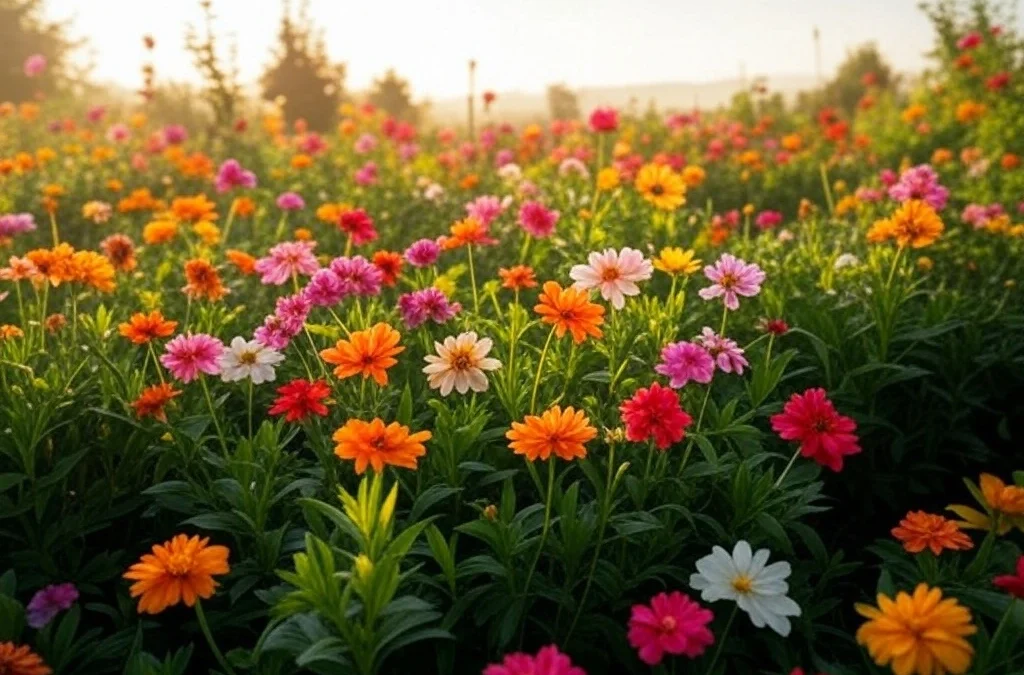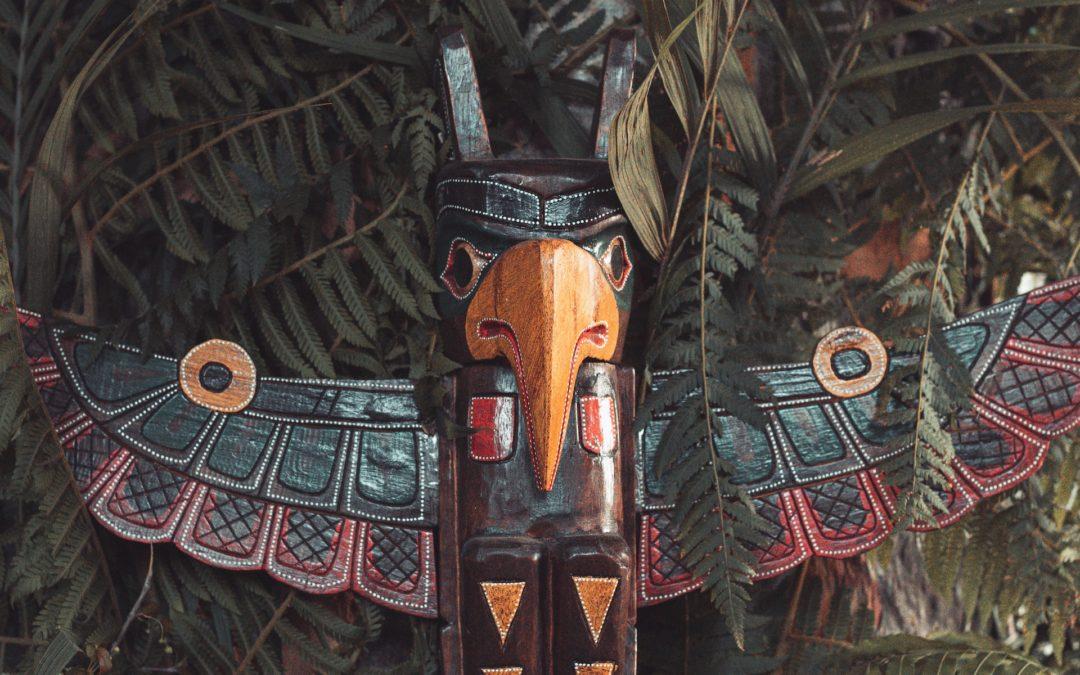Exploring the world’s Indigenous Heritage offers a journey through a rich tapestry of cultural diversity and ancient wisdom. Across the globe, indigenous communities have preserved unique traditions, art forms, and knowledge systems that provide a window into their distinct way of life. These examples of Indigenous Heritage, ranging from the intricate Maori carvings of New Zealand to the vibrant Navajo weaving techniques in the United States, are not just artistic expressions but are deeply intertwined with the spiritual, social, and environmental values of their creators. They stand as testaments to the resilience and creativity of indigenous peoples, amidst changing times and challenges.
This article highlights 20 inspiring examples of Indigenous Heritage from around the world, showcasing the breadth and depth of indigenous cultures. Each example is a celebration of identity, history, and the enduring connection between people and their ancestral lands. From the Maori dance to the Aboriginal Dreamtime paintings in Australia, these heritage examples offer a glimpse into the rich, varied, and profound ways indigenous communities understand and relate to the world. Through exploring these examples, we gain not only an appreciation for indigenous art and customs but also insights into sustainable living practices and philosophies that have stood the test of time.
What is Indigenous Heritage?
Indigenous heritage refers to the legacy, traditions, culture, and historical artifacts that are uniquely associated with indigenous peoples. These groups are the original inhabitants of a region, maintaining a distinct cultural identity and a close relationship with their ancestral lands. indigenous heritage encompasses a wide array of elements, including but not limited to language, spiritual practices, music, dance, storytelling, art, crafts, and knowledge systems. This heritage is integral to the community’s identity, offering a rich, historical tapestry that provides insights into their beliefs, values, and ways of life. Protecting and preserving indigenous heritage is crucial as it contributes to global cultural diversity and provides invaluable perspectives on sustainable living and environmental stewardship.
Indigenous heritage also includes tangible artifacts such as tools, clothing, and structures, as well as intangible elements like folklore, ceremonies, and oral traditions. These aspects are not only historical records but also living practices that evolve and adapt over time.
Indigenous heritage is often deeply tied to the natural environment, reflecting a unique understanding and respect for the land, water, plants, and animals. This relationship is evident in traditional land management practices, medicinal knowledge, and the spiritual significance placed on natural sites.
The preservation of indigenous heritage is vital, not just for the indigenous communities themselves, but for the broader understanding of human history and cultural diversity. It offers insights into different ways of interpreting the world and solving complex problems, especially in terms of environmental conservation and sustainability.
However, indigenous heritage faces threats from various factors, including globalization, climate change, and cultural assimilation. Efforts to protect and revitalize indigenous heritage are crucial and involve respecting indigenous rights, supporting cultural education and awareness, and fostering partnerships that empower indigenous communities.
Recognizing and valuing indigenous heritage is a step towards building a more inclusive and diverse global community, where the richness of different cultures and histories is celebrated and preserved for future generations.
20 Indigenous Heritage Examples
1. Dreamtime Stories (Australia)
Aboriginal Australians have a rich oral tradition of Dreamtime stories, which are an integral part of their cultural heritage. The Dreamtime, also known as the “time before time,” encompasses a spiritual realm where ancestral beings shaped the landscape, created animals and laid the foundations of cultural practices. These stories serve as a guide to understanding the creation of the world, human existence, and the interconnectedness of all living things in Aboriginal cosmology.
2. Totem Poles (North America)
Indigenous peoples of North America, particularly the Haida, and Tlingit, are renowned for creating intricate totem poles. These towering wooden sculptures depict family lineage, stories of ancestral spirits, and spiritual beliefs. Each carving and symbol on a totem pole represents a unique narrative, reflecting the cultural identity and history of the indigenous community that created it.
3. Inuit Throat Singing (Arctic regions)
Inuit women engage in throat singing, a traditional practice that involves creating rhythmic sounds using the throat. This unique form of vocal art is often performed in pairs, with singers engaging in a friendly competition to produce complex, harmonious sounds. Throat singing serves various purposes, from entertainment and social bonding to spiritual and healing ceremonies, making it a vital aspect of Inuit cultural expression.
4. Maori Tattoos (New Zealand)
Ta moko, the traditional Maori tattooing, is a distinctive form of body art with deep cultural significance. Each moko design is unique and carries information about the wearer’s genealogy, social status, and personal experiences. Maori tattoos are not just aesthetic; they are a visible expression of identity and a way to connect with one’s ancestral roots and cultural heritage.
5. Navajo Weaving (United States)
The Navajo people are celebrated for their exquisite woven rugs and blankets, known for their intricate geometric patterns and vibrant colors. Navajo weaving is a traditional art form that has been passed down through generations. The designs often hold symbolic meanings, reflecting the interconnectedness of nature, spirituality, and daily life in Navajo culture.
6. Rainforest Medicine (Amazon)
Indigenous tribes in the Amazon rainforest possess profound knowledge of medicinal plants and their healing properties. The rainforest serves as a pharmacy for these communities, offering a diverse array of plants used in traditional medicine. The expertise of indigenous healers is passed down orally, representing a holistic approach to health that considers the physical, spiritual, and environmental aspects of well-being.
7. Sámi Reindeer Herding (Scandinavia)
The Sámi people, indigenous to Scandinavia, traditionally engaged in reindeer herding, a practice deeply intertwined with their nomadic lifestyle. Reindeer not only provide sustenance but also play a crucial role in Sámi culture, offering materials for clothing, tools, and spiritual rituals. Reindeer herding reflects the symbiotic relationship between the Sámi people and the Arctic environment they inhabit.
8. Aboriginal Dot Painting (Australia)
Indigenous Australians use dot painting as a means to depict Dreamtime stories and convey spiritual meanings. This unique art form involves the application of finely dotted patterns to create intricate images on various surfaces. Each dot carries significance, representing elements of the natural world, ancestral beings, and the interconnectedness of life in Aboriginal belief systems.
9. Hawaiian Hula Dance (Hawaii)
The hula dance is a traditional Hawaiian art form that goes beyond mere entertainment. It serves as a means of expressing stories, myths, and the cultural heritage of the islands. Hula incorporates graceful movements, chanting, and music, and it often conveys narratives related to nature, gods, and historical events, making it a powerful and symbolic form of cultural expression.
10. Native American Pottery (Southwest United States)
Various Native American tribes, such as the Pueblo people, have a rich history of creating pottery with distinctive designs. Pottery making is not only a utilitarian craft but also a form of artistic expression. The intricate patterns and symbols on Native American pottery often reflect cultural beliefs, spirituality, and connections to the natural world.
11. Ainu Woodcarving (Japan)
- The Ainu people of Japan are renowned for their intricate woodcarvings, which often depict animals and spirits. These carvings serve both artistic and spiritual purposes, as they are believed to embody the essence of the natural world and the Ainu’s animistic beliefs. Animals like bears and owls hold particular importance in Ainu spirituality, and their representations in woodcarvings often symbolize a connection between the human and spiritual realms.
12. Toraja Funeral Rites (Indonesia)
The Toraja people of Sulawesi engage in elaborate funeral ceremonies that reflect their beliefs about life, death, and the afterlife. These ceremonies are complex and may involve intricate rituals, including the carving of effigies, known as Tau Tau, representing the deceased. The Toraja people believe in a journey to the afterlife, and these ceremonies play a crucial role in ensuring a peaceful transition for the departed and maintaining a strong connection between the living and the dead.
13. Bush Tucker (Australia)
Aboriginal Australians have a deep knowledge of “bush tucker,” referring to native foods and plants used for sustenance. This traditional knowledge has been passed down through generations and encompasses a wide array of plants and animals that are not only sources of nutrition but also hold cultural significance. The gathering and preparation of bush tucker are integral to the cultural identity of Aboriginal communities, emphasizing a profound connection to the land and its resources.
14. Iroquois Confederacy (North America)
The Iroquois, or Haudenosaunee, formed a confederacy that greatly influenced the democratic principles of the United States. The Iroquois Confederacy established long before the founding of the United States, served as a model of governance with an emphasis on cooperation, consensus-building, and individual rights. The Iroquois Constitution, known as the Great Law of Peace, laid the foundation for many democratic ideals embraced by the U.S. Constitution.
15. Torres Strait Islander Dance (Australia)
The Torres Strait Islanders have a vibrant dance tradition that celebrates their cultural heritage. These dances are rich in symbolism, conveying stories of the islands’ history, myths, and spiritual beliefs. The movements, costumes, and music in Torres Strait Islander dances contribute to a dynamic and visually stunning expression of cultural pride, fostering a sense of community and identity.
16. Quechua Textile Art (Andes)
The Quechua people of the Andes are skilled weavers, creating intricate textiles that often carry cultural and symbolic significance. Traditional Quechua textiles are more than just fabrics; they are visual expressions of the community’s history, spirituality, and social identity. Each pattern, color, and design in the textiles can convey specific meanings related to the natural environment, mythology, and familial connections.
17. Hopi Kachina Dolls (United States)
The Hopi people craft Kachina dolls, representing spiritual beings and ancestors in their religious ceremonies. Kachinas are revered as messengers between the human and spiritual worlds. The intricate craftsmanship of these dolls reflects the Hopi people’s deep spiritual connection to the land and their commitment to preserving cultural traditions through art.
18. San Rock Art (Southern Africa)
The San people have a rich tradition of rock art, depicting scenes from daily life, spiritual beliefs, and wildlife. These ancient rock paintings and engravings provide a glimpse into the cultural and spiritual practices of the San people. The art often features depictions of hunting scenes, trance dances, and symbolic representations of the interconnectedness between humans and the natural world.
19. Māori War Dance (New Zealand)
The haka is a powerful Māori war dance, often performed to convey strength, unity, and cultural pride. The haka is not only a traditional dance but also a form of ceremonial expression used in various contexts, including welcoming guests, commemorating events, and asserting cultural identity. The energetic movements and rhythmic chanting make the haka a captivating and emotionally charged performance.
20. Yup’ik Eskimo Mask Making (Alaska)
The Yup’ik people of Alaska carve masks that play a significant role in ceremonial dances and rituals. These masks, often made from wood, fur, and other natural materials, represent spirits, animals, and ancestors. The wearing of masks during ceremonies allows the Yup’ik people to connect with the spiritual realm and enact narratives that are integral to their cultural heritage.
Importance of Indigenous Heritage
The Indigenous heritage of a society is a tapestry woven from the threads of history, culture, and identity. It is a reservoir of knowledge and wisdom, passed down through generations. This heritage embodies the customs, practices, and beliefs that have shaped the identities of Indigenous communities over millennia. As the world continually evolves, the importance of preserving and respecting Indigenous heritage cannot be overstated.
One of the primary values of Indigenous heritage lies in its diversity. Each Indigenous culture is distinct, with its own language, traditions, and ways of understanding the world. This diversity enriches the global cultural landscape, offering a plethora of perspectives and experiences. It’s like having a vast library at our fingertips, where each book tells a unique story of human existence. Losing any of these cultures would be akin to losing a chapter of human history, an irreparable loss to our collective knowledge.
Furthermore, Indigenous heritage plays a crucial role in fostering a sense of belonging and identity. For Indigenous people, their heritage is not just a relic of the past; it is a living, breathing part of who they are. It connects them to their ancestors, their land, and each other, forming an unbreakable bond that transcends time. In a world where globalization can often lead to a sense of uniformity, Indigenous cultures offer a reminder of the rich tapestry of human existence.
Another critical aspect of Indigenous heritage is its contribution to the arts. Indigenous music, dance, storytelling, and visual arts are not only forms of expression but also means of preserving history and transmitting knowledge. They are vibrant and dynamic, continually evolving while staying rooted in tradition. These art forms provide a window into the Indigenous worldview, allowing others to experience and appreciate their rich cultural landscapes.
Moreover, the Indigenous heritage offers insights into governance and community living. Indigenous societies have long practiced forms of self-governance, resolving conflicts, and managing resources in ways that can offer valuable lessons in today’s world. Their approach to community living, often characterized by principles of mutual aid and collective responsibility, stands as a testament to the potential for societies to operate in harmony and respect.
In preserving Indigenous heritage, we safeguard a crucial part of our world’s cultural diversity. It’s a recognition that every culture, every tradition, and every language adds value to the tapestry of human experience. By honoring and protecting these heritages, we not only respect the rights and dignity of Indigenous peoples but also enrich our understanding of the human story.
Therefore, it is imperative that we, as a global community, recognize and respect the intrinsic value of Indigenous heritage. This involves actively listening to Indigenous voices, supporting their efforts to preserve their cultures, and learning from their vast, often underappreciated, contributions to our shared human history. In doing so, we not only pay homage to the past but also pave the way for a more inclusive and culturally rich future.
What Challenges Do Indigenous Communities Face In Preserving Their Heritage?
Indigenous communities face numerous challenges in preserving their rich cultural heritage, often stemming from historical injustices, systemic issues, and contemporary pressures. One significant challenge is the ongoing threat to ancestral lands. Many indigenous communities grapple with issues such as land dispossession, environmental degradation, and encroachment, which directly impact their ability to maintain traditional connections to the land. This not only disrupts spiritual practices and cultural rituals deeply tied to specific territories but also hinders the passing down of traditional ecological knowledge crucial for sustainable living.
Language preservation is another critical challenge. The erosion of indigenous languages due to factors like globalization, forced assimilation policies, and limited educational resources pose a threat to the transmission of cultural wisdom. As younger generations often face pressures to adopt dominant languages, the risk of losing the unique perspectives and nuanced understanding embedded in indigenous languages becomes significant. Additionally, the preservation of languages is closely linked to maintaining cultural identity, and the loss of languages can contribute to a weakening of the overall fabric of indigenous heritage. Addressing these challenges requires holistic approaches that involve recognizing and rectifying historical injustices, advocating for land rights, supporting language revitalization efforts, and fostering cultural pride within indigenous communities.
How Can Individuals Support The Preservation Of Indigenous Heritage?
Individuals can play a crucial role in supporting the preservation of indigenous heritage by fostering awareness, respect, and active collaboration. One essential step is to educate oneself about the histories, cultures, and challenges faced by indigenous communities. This includes understanding the impact of historical injustices, land dispossession, and cultural assimilation. By raising awareness about these issues, individuals can contribute to a broader understanding of the unique struggles indigenous communities face in preserving their heritage.
Active support can also take the form of respecting indigenous rights and advocating for policies that promote cultural preservation. This includes acknowledging and respecting land rights, supporting initiatives that protect ancestral lands from exploitation, and advocating for the implementation of laws that safeguard indigenous cultural practices. Additionally, individuals can contribute by engaging in ethical tourism that respects indigenous communities and their traditions, purchasing ethically sourced indigenous arts and crafts, and actively promoting the inclusion of indigenous perspectives in educational curricula. By recognizing the value of indigenous heritage and actively participating in initiatives that uphold and celebrate their cultures, individuals can contribute to a more inclus
Are There International Efforts To Protect Indigenous Heritage?
Yes, there are international efforts aimed at protecting and promoting the rights and heritage of indigenous communities. The United Nations Declaration on the Rights of Indigenous Peoples (UNDRIP) is a significant international instrument that outlines the collective rights of indigenous peoples, including the right to maintain, control, protect, and develop their cultural heritage. This declaration represents a global commitment to respecting and safeguarding the diverse cultures, traditions, and languages of indigenous communities.
International organizations, NGOs, and indigenous advocacy groups also collaborate to address common challenges faced by indigenous peoples. Efforts include promoting sustainable development, protecting ancestral lands, and advocating for policies that respect indigenous rights. The United Nations Educational, Scientific and Cultural Organization (UNESCO) plays a crucial role by supporting projects and initiatives that focus on the preservation of indigenous languages, traditions, and knowledge. Additionally, there are global networks and forums where indigenous representatives can share experiences, voice concerns, and collaborate on strategies to address common issues. While challenges persist, these international efforts reflect a growing recognition of the importance of protecting and celebrating the rich cultural heritage of indigenous communities on a global scale.
What Is The Role Of Indigenous Heritage In Sustainable Practices?
Indigenous heritage plays a crucial role in promoting sustainable practices, as many indigenous communities have developed harmonious relationships with the environment over generations. Traditional ecological knowledge passed down through their cultural heritage encompasses sustainable resource management, agricultural practices, and a deep understanding of local ecosystems. Indigenous communities often view the land as a living entity with which they share a reciprocal relationship, emphasizing the importance of preserving ecological balance and biodiversity.
Moreover, indigenous heritage contributes to sustainable practices by fostering a sense of community cohesion and cooperation. Traditional social structures within indigenous societies often prioritize shared responsibilities and communal decision-making processes. This collective approach to governance promotes sustainable resource use and environmental conservation, as decisions are made with a long-term view that considers the well-being of both the community and the ecosystem. The integration of indigenous knowledge and practices into broader conversations about sustainability can offer valuable insights and contribute to more holistic and resilient approaches to environmental stewardship. Recognizing and respecting the sustainable practices embedded in indigenous heritage is essential for promoting environmental sustainability and addressing global challenges related to climate change and ecological degradation.
How Does Tourism Impact Indigenous Heritage?
Tourism can have both positive and negative impacts on indigenous heritage, depending on how it is managed and the level of respect for the cultural integrity of indigenous communities. On the positive side, responsible tourism can provide economic opportunities for indigenous people, offering a means for them to showcase and share their cultural heritage with the world. Cultural tourism can create a platform for indigenous communities to preserve and revitalize their traditions, as it encourages the continuation of traditional practices and the transmission of cultural knowledge to future generations. Additionally, by engaging with tourists, indigenous communities may raise awareness about their unique histories, fostering cross-cultural understanding and appreciation.
However, tourism also poses significant challenges and risks to indigenous heritage. The commodification of culture, often driven by commercial interests, can lead to the exploitation and misrepresentation of indigenous traditions for profit. There is a risk of cultural appropriation, where aspects of indigenous heritage are taken out of context or commercialized without proper understanding or respect. Moreover, an influx of tourists may contribute to environmental degradation, impacting sacred sites and disrupting the delicate balance that indigenous communities maintain with their ecosystems. Striking a balance between promoting tourism as a tool for cultural exchange and ensuring the protection of indigenous heritage requires careful planning, community involvement, and ethical considerations. Responsible tourism practices that prioritize cultural sensitivity, environmental conservation, and equitable economic benefits are essential for minimizing the negative impact of tourism on indigenous communities and their cultural heritage.
The Most Popular on BitGlint

30 Wishful Thinking Examples & Meaning
Wishful thinking is something we all do at some point. You hope things will turn out fine—even if there’s no real...

Top 100 Going To Questions: Conversation Questions
Are you looking for great "going to questions" to spice up your conversations? This article has got you covered!...

30 Patterns in Nature: Examples & Explanation
Patterns in nature surround us every day. From the delicate veins on a leaf to the mesmerizing spirals of a galaxy,...

20 Examples of Gravity & What Gravity Really Is
Gravity is one of the most important forces in the universe, but many people don’t fully understand what it really is...

50 Examples of Square Things
Square things are part of everyday life, even if we don’t always think about them. From objects we use at home to...

30 Different Vibes & What They Mean
We all talk about "vibes," but what does that really mean? A vibe is the feeling or atmosphere you sense in a place,...

20 Chronology Examples & Meaning
Chronology is something we use more than we realize. It shows up in conversations, in how we remember the past, and in...
Get Inspired with BitGlint
The Latest
20 Best Examples of Hope & Definition
In today's fast-paced world, hope serves as a beacon, guiding us through challenging times and towards brighter days. This article delves into the essence of hope, presenting 20 compelling examples alongside their definitions. These narratives and insights are...

Top 100 Optimism Examples & Definition
Optimism is more than just looking on the bright side. It’s a mindset that shapes how people face challenges, make decisions, and live their everyday lives. In a world where stress and uncertainty are common, optimism offers a different way to think—and a better way...
50 Contrast Examples in Life, Art & Literature
We notice contrast all the time, even if we don’t think about it. It's there when the sky shifts from light to dark. It’s in the stories we read, the art we look at, and the conversations we have. Contrast helps us tell things apart. It helps us feel, understand, and...
30 Flow State Examples & Definition
Most people have felt it at some point — that rare moment when everything just clicks. You're working, moving, or thinking, and suddenly it's like the rest of the world fades out. You're focused, clear, and everything you're doing feels smooth and natural. That’s...

